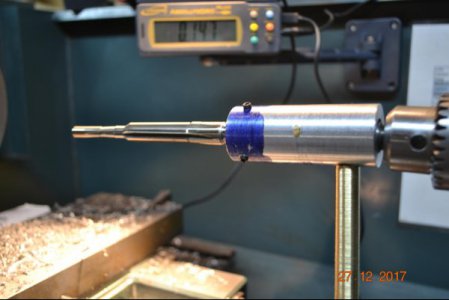- Joined
- Aug 5, 2017
- Messages
- 46
Howdy friends. I'll start by saying that I hope that you've all enjoyed a Merry Christmas with family and friends and that Santa was good to you. Then, I'll follow by wishing all good health, prosperity and happiness in the new year. We've been hit with a major cold spell here in the great white north. Heck, on December 11th, we had no snow here in God's country (southern Alberta), temps in the high teens (celcius that is). Then BANG, a major snow storm, temps down to -20C on average and one morning down to -32C. It's starting to get back up to Tee shirt weather here in Canada (-15C)...LOL. Anyhow, this weather has kept me in the shop. So, perfect opportunity to widdle out a "floating reamer holder". I cannot take credit for the design, I got it from "firearmdesigner.com".



 )
)